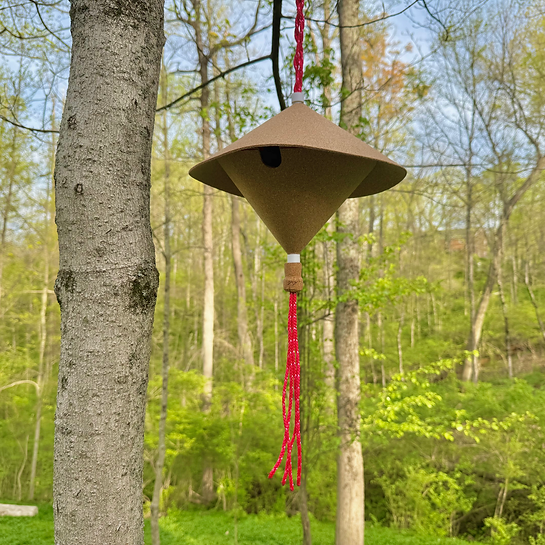



Client
Timeline
Services
STUDIO PROJECT
5 WEEKS
SUSTAINABLE HOME & GARDEN
What is

?
It is an environmentally friendly flat-pack birdhouse with at-home tool-free + hardware free assembly
Research Overview






Design Goals
Sustainable
Flat-Pack
Intuitive At-Home Tool-Free Assembly
Sketching

Designing

Prototyping






The first prototypes were constructed from Bristol paper to test scale, tolerances, and joinery concepts. Due to the relatively high-cost of cork during the prototyping process, small scale cork prototypes were created to test the material. These mock-ups helped evaluate the adhesive performance and structural integrity when under tension or suspended. I tested how well the adhesive on the cork bonded under pressure and it held up to mild stress during bending and handling. I iteratively adjusted hole placements, rope channels, and assembly sequences based on these trials.
Once proportions were refined, I moved to a full double-layer prototype using Bristol paper using my final die-lines and glue on the adhesive tab. The Kongsberg machine proved highly effective at cutting clean, consistent pieces, allowing me to dial in accuracy at a small scale.
Final Design - Manufacturing Drawings



The final version of the birdhouse was fabricated on the Kongsberg using dielines. Components were assembled by hand using only pressure, demonstrating the accessibility and ease of the design. The paracord was threaded through 3D printed internal loops and secured with a recycled wine cork—acting as a tension lock—securing the structure in place, creating a visually integrated suspension system. 3D printed components were added to the assembly including the feeder and water tray.
The design is also suitable for various customization options offered to the user regarding material type and color with different parts of the birdhouse; such as the roof, base, and rope—increasing its market viability in addition to it’s dual function as both a birdhouse and feeder.



